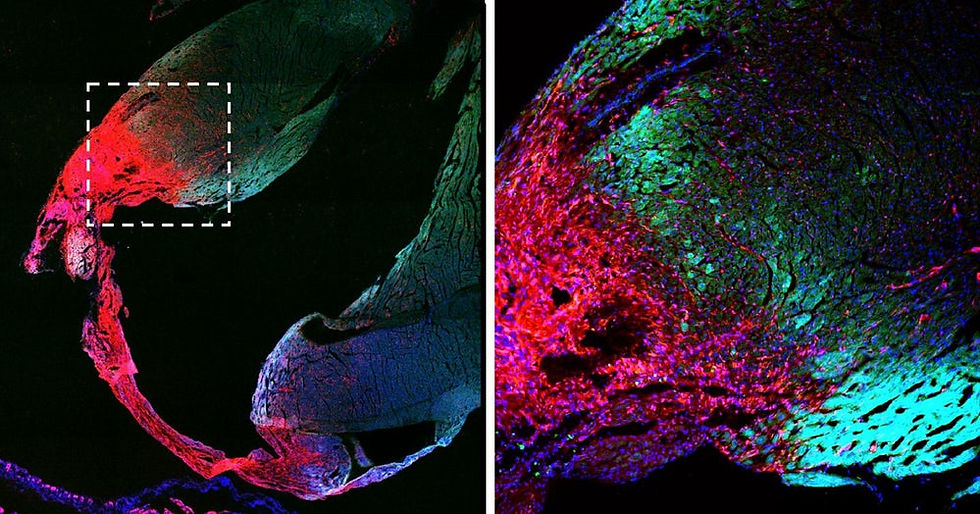Heart self-repair may be impossible as it lacks stem cells
- Ken Ecott
- Dec 20, 2018
- 3 min read

This week brings bad news for people who have suffered heart attacks: Self-healing may not come from within.
Over the past 2 decades, the possibility of adult stem cells serving as mediators of cardiac regeneration of damaged tissue have been a source of great hope in cardiovascular medicine. Indeed researchers have debated for years whether hearts have their own stem cells. Multiple research groups have claimed the definitive identification of cardiac stem cells, yet none of these claims have held up.
The existence of a population of the hearts own stem cells could produce new heart muscle cells and might help the organ repair itself after injury. Now it would seem the debate may be over. After a team of researchers followed the fate of dividing cells in the hearts of mice, that lead them to concluded that there are no heart stem cells.
Although we most commonly associate them with embryos, stem cells are with us for our whole lives, responsible for patching up damaged tissue throughout our bodies. During a heart attack, parts of the muscle can die after the blood supply is cut off. Rather than healing like other tissues, the heart simply scars over with cells called fibroblasts cells, permanently reducing its effectiveness and often leading to further complications later in life.

The scar tissue (red) and heart cells (green) in a mouse after a heart attack (Credit: Hubrecht Institute)
To solve this debate, Professor Hans Clevers of the Hubrecht Institute, the University Medical Center Utrecht and Utrecht University and co-authors focused on the broadest and most direct definition of stem cell function in the mouse heart: the ability of a cell to replace lost tissue by cell division.
In the heart, this means that any cell that can produce new heart muscle cells after a heart attack would be termed a cardiac stem cell.
The researchers generated a ‘cell-by-cell’ map of all dividing cardiac cells before and after a myocardial infarction using advanced molecular and genetic technologies.
They found that many types of cells divide upon damage of the heart, but that none of these are capable of generating new heart muscle.
“This study is fairly definitive that there is not a population of stem cells within the heart that gives rise to new muscle,” says Deepak Srivastava, a cardiologist and developmental biologist at the Gladstone Institutes in San Francisco who was not involved in the study published in the Proceedings of the National Academy of Sciences.
The team concluded that heart stem cells don't exist – and those cells that past studies may have mistaken for cardiac stem cells were instead producing blood vessels or immune cells, not heart muscle.
The discovery is no doubt disappointing, but other researchers have still found success in using stem cells to patch up broken hearts in other ways. One team used exosomes (messenger modules of cells) instead of the stem cells themselves, while another group developed a hydrogel that helped injected stem cells survive and proliferate in the heart to patch up injured muscle.
A secondary finding of the new study paints post-heart attack scar tissue in a more positive light. By blocking the formation of scar tissue, the team found that the mouse hearts simply gave out.
“While this scar tissue contains no muscle and thus does not contribute to the pump function of the heart, the fibrotic scar ‘holds together’ the infarcted area.”
“Indeed, when the formation of the scar tissue is blocked, the mice succumb to acute cardiac rupture.”
It may not be pulling its weight in the pumping department, but scar tissue at least holds the heart together in its usual shape after an attack. Without it, there might not be any second chances at all.







Comments